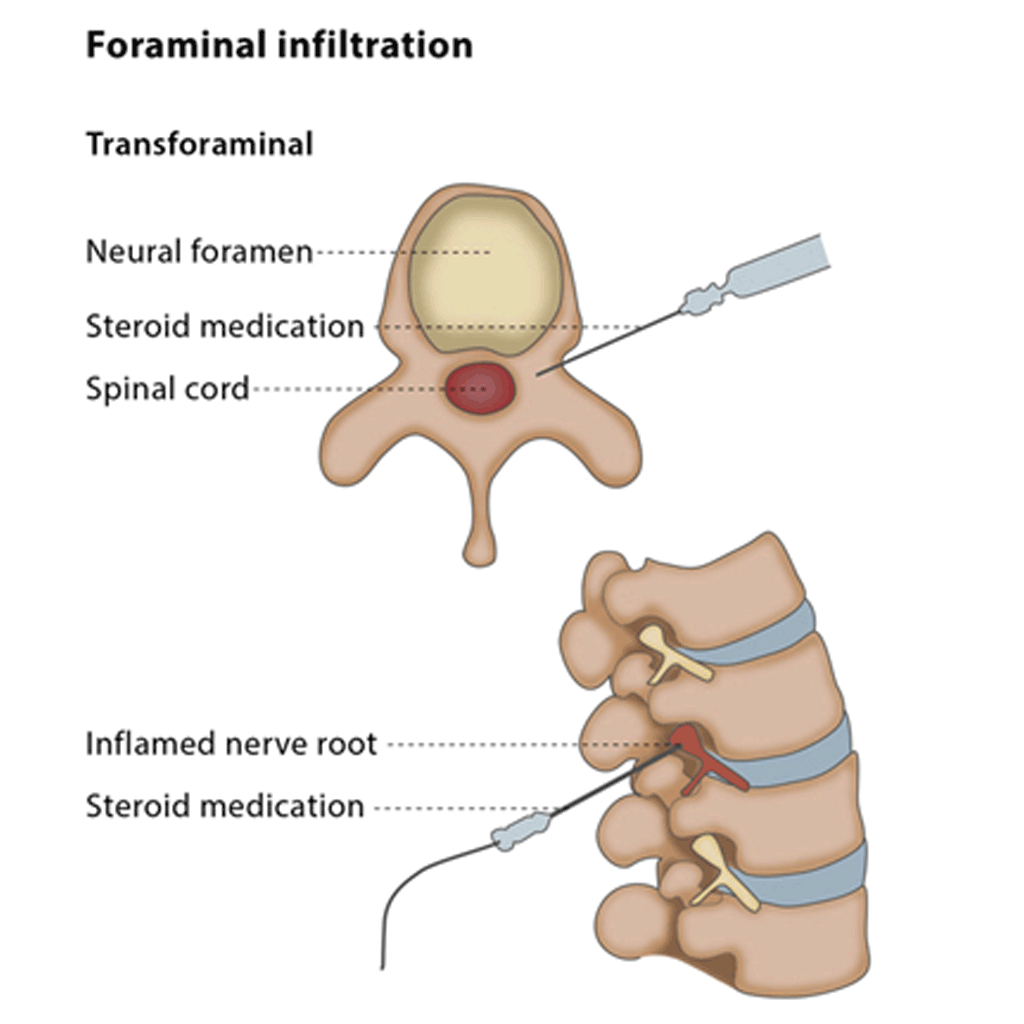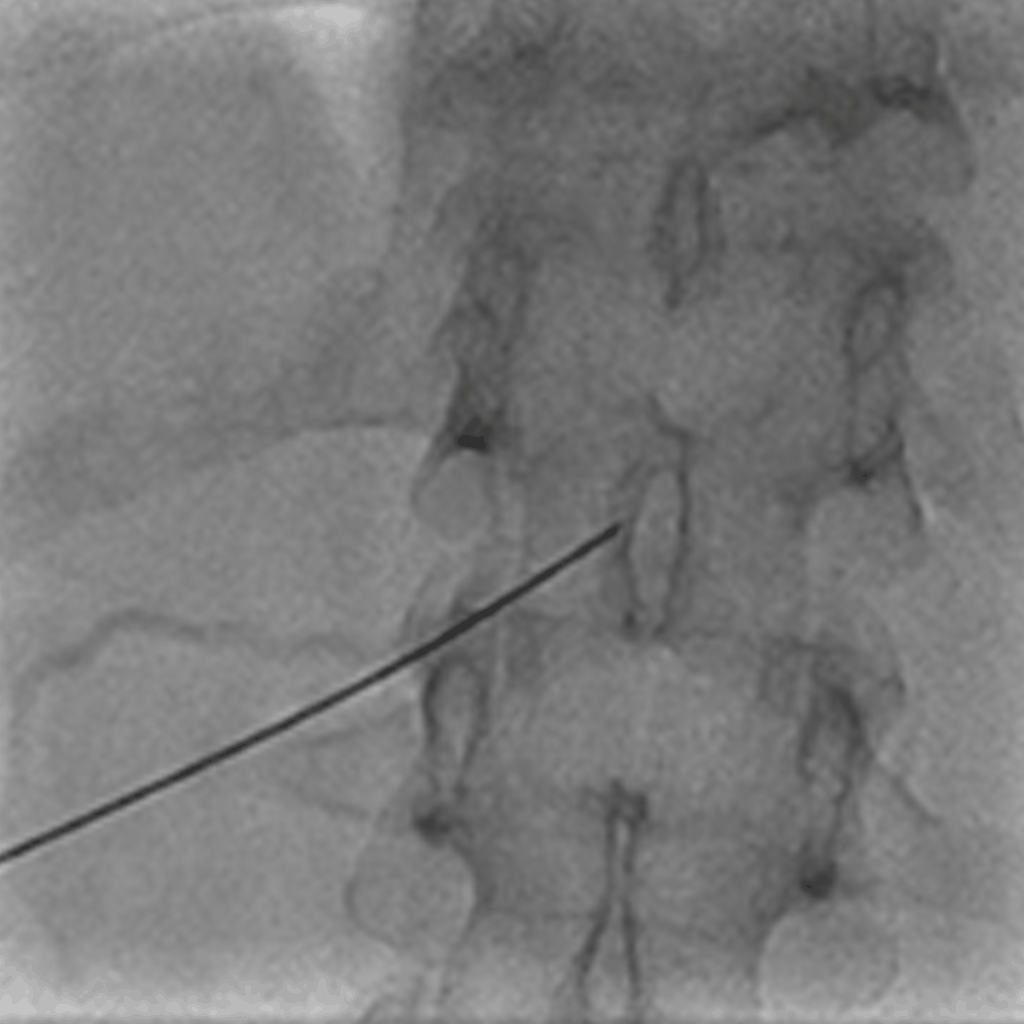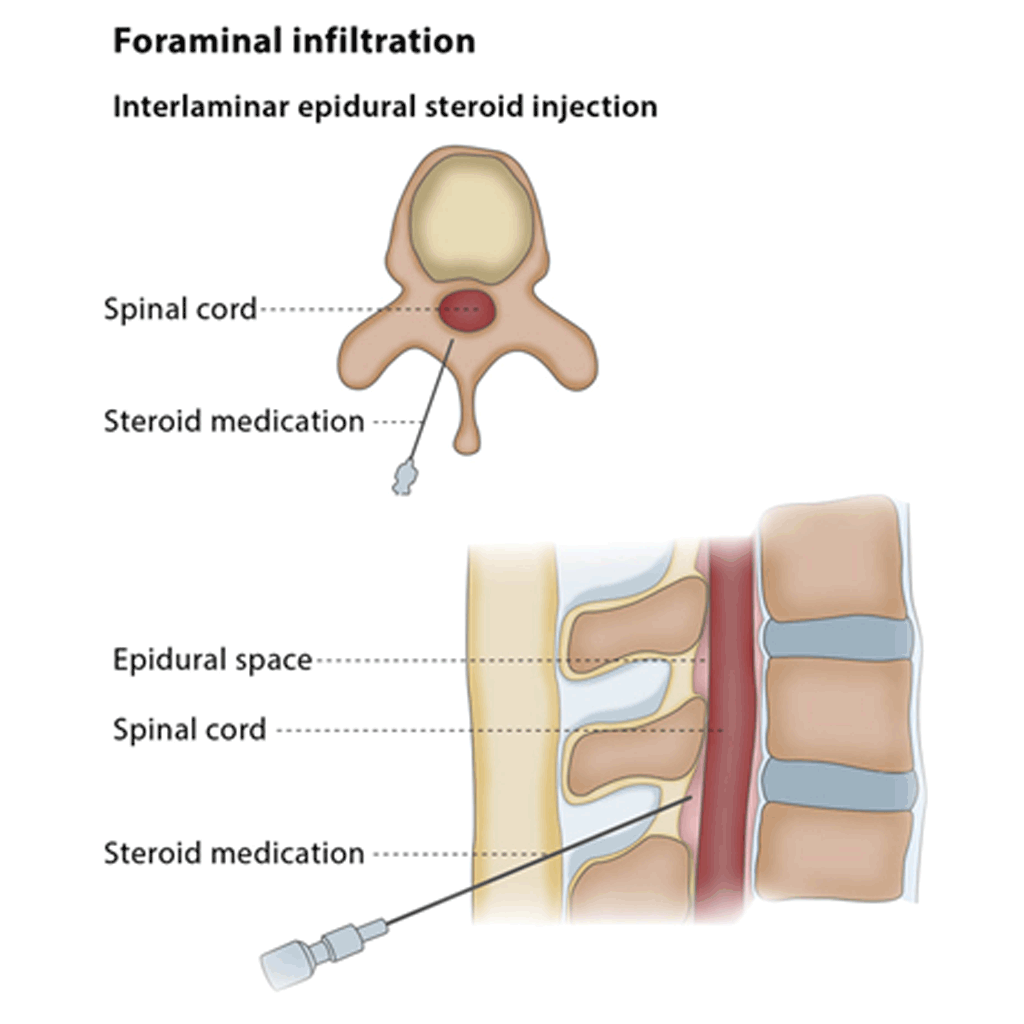INFILTRATIONS AND GUIDED INJECTIONS FOR CHRONIC & ACUTE PAIN MANAGEMENT
Patient Education Material
In between the vertebrae in your spine, there are spinal discs (also known as intervertebral discs), and in the middle of each spinal disc is a jelly-like substance which is called the nucleus pulposus. Occasionally, the nucleus pulposus bulges through the outer ring which normally keeps it in place. This is known as herniation of the intervertebral disc or a ‘slipped disc’ and is a major cause of lower back pain, affecting mobility, physical function and quality of life.
Facet joint syndrome is another form of chronic lower back pain. It is characterised by stiffness and pain that increases when twisting and bending backwards. It is frequently caused by osteoarthritis, a type of arthritis that causes joint cartilage to deteriorate. This can also be caused by the joints bearing an unusual amount of weight as well as by repetitive stress injury. Facet joint syndrome is not easy to diagnose because it may be unclear where the source of the pain is located, making it easy for symptoms to be confused with the many other causes of back pain.
An infiltration and guided injection is the injection of local anaesthetics, steroids or ozone into your lower back for the treatment of sciatic pain due to disc herniation or facet joint syndrome. The procedure can be done under fluoroscopy or CT guidance.
Under CT or fluoroscopy guidance, a mixture of local anaesthetics and corticosteroids is injected into the lumbar region (lower back).
The procedure is similar when performed in the neck region, though it is more difficult and there are more risks associated with this procedure. Before the injection of local anaesthetics and steroid medication can be carried out, a contrast agent (X-ray dye) must be injected.


Under CT or fluoroscopy guidance, a mixture of local anaesthetics and corticosteroids is injected into the lumbar region (lower back).
The procedure is similar when performed in the neck region, though it is more difficult and there are more risks associated with this procedure. Before the injection of local anaesthetics and steroid medication can be carried out, a contrast agent (X-ray dye) must be injected.

Radiculopathy means that one or more nerves do not work properly due to being inflamed or affected by the disease. This may be caused by a deterioration of the spinal discs or a narrowing of the spinal canal. Both of these diseases require steroid injections in your lower back.
The injections can also be used to treat back pain caused by degenerative osteoarthritis of the joints between the centre of the spinal vertebrae or the gaps between the vertebrae, regardless of whether you also have a condition affecting your nerves.
You may be recommended for a radicular block, which prevents particular nerves from transmitting pain signals if you suffer from chronic nerve pain in your legs, post-surgical pain, pain caused by a tumour or pain caused by blisters. A surgical test can show if you may benefit from a radicular block.
Kindly contact:
- One PKLI Avenue, DHA, Phase-6, Lahore, Pakistan.
- info@pkli.org.pk
- +92 42 111 117 554

